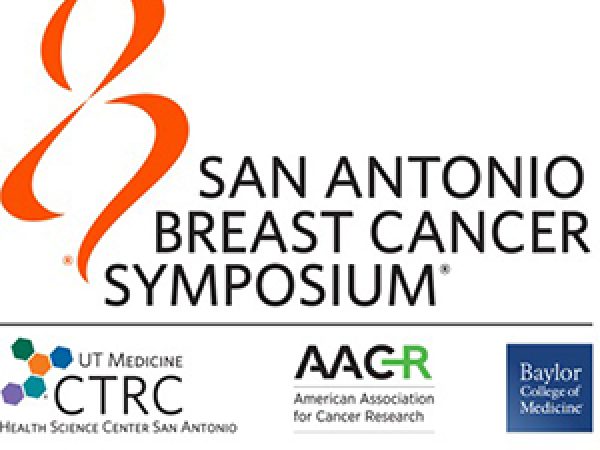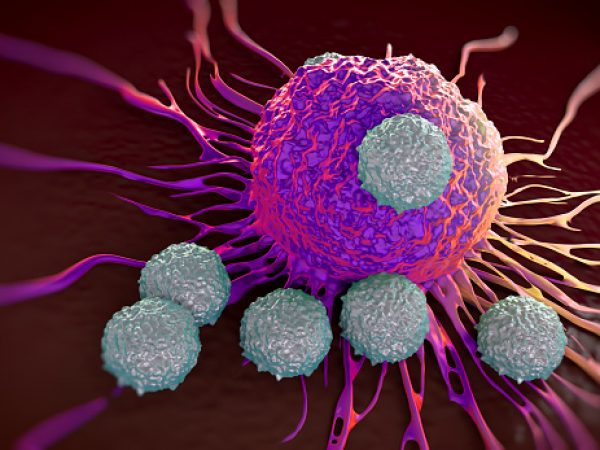AACR Virtual Annual Meeting II: How Infections, Vaccinations, and Organ Transplants Can Affect Cancer Risk
AACR Virtual Annual Meeting II featured more than 20 minisymposia sessions during the three-day conference. One such minisymposium focused on Infection and Immune Factors.
Persistent infections with pathogens—such as the human papillomavirus (HPV), hepatitis B and C viruses (HBV/HCV), H. pylori, and others—represent a major risk factor for cancer incidence worldwide. Indeed, an analysis published in Lancet Oncology estimated that 2.2 million cancer cases in 2018 were attributable to infections, representing 13 percent of all global cancer cases (excluding non-melanoma skin cancers). While vaccines exist for many of these pathogens, access to them is not universal.
The immune system and cancer are intimately linked. Our immune system can eliminate precancerous cells or early cancers before they become a threat; however, cancers can also create an environment that suppresses the immune response and fosters cancer progression and metastasis. Further, autoimmune and chronic inflammatory diseases have been shown to increase the risk of certain cancers. The complex interplay between immune cells and cancer cells represents a major focus in the oncology field.
To that end, talks in this minisymposium examined how vaccinations and solid organ transplants—both of which result in modulation of the immune system—can affect cancer risk. Additionally, one presentation evaluated a potential biomarker for liver cancer, which is often caused by chronic infection with HBV or HCV.
A biomarker to predict HCC risk
One talk, delivered by Jian-Min Yuan, MD, PhD, from the University of Pittsburgh, discussed a potential biomarker to aid in risk prediction for hepatocellular carcinoma (HCC), the most common type of liver cancer.

The incidence of liver cancer in the United States is rising, and over 800,000 people are diagnosed with liver cancer per year worldwide. A major risk factor for developing liver cancer is chronic infection with HBV or HCV, which are primarily spread through blood or other bodily fluids. More than 300 million people worldwide are infected with HBV or HCV, Yuan said, and more than 700,000 will die from liver cancer per year. Finding ways to identify those with chronic HBV/HCV infection who are the most likely to develop HCC is an area of active investigation.
Interleukin 27 (IL-27) is a cytokine that is involved in signal transduction and T-cell differentiation, and research has shown that IL-27 has both pro-tumor and antitumor effects. To elucidate if IL-27 plays a role in HCC, Yuan and colleagues interrogated data from The Cancer Genome Atlas (TCGA) and found that IL-27 microRNA levels were 10 to 100 times higher in HCC tumor tissue compared with tumor tissue from more than a dozen other solid tumor types. “Based on this interesting observation, we hypothesized that individuals with elevated levels of serum IL-27 at baseline may have a higher risk of developing HCC,” Yuan said.
To test this hypothesis, Yuan and colleagues calculated the odds of developing HCC based on the levels of serum IL-27 levels in two prospective cohort studies conducted in Asia. In a joint analysis, the researchers reported large increases in HCC risk based on serum IL-27 levels and HBsAg status (a surface antigen of HBV that indicates a current infection). Compared with HBsAg-negative individuals in the lowest tertile of serum IL-27 levels, those who were HBsAg-negative in the second and third tertile of serum IL-27 levels had 10.7 and 45.5 times the odds of developing HCC; those who were HBsAg-positive in the first, second, and third tertile of serum IL-27 levels had 24.7, 66.1, and 265.2 times the odds of developing HCC, respectively.
Yuan concluded by noting that serum IL-27 levels may be useful for identifying individuals at high risk for HCC, who should receive regular surveillance for the early detection of liver cancer.
Vaccination history and lymphoma risk
Geffen Kleinstern, PhD, from the Mayo Clinic in Rochester, Minnesota, talked about the association between several common vaccines and the risk of lymphoma. Kleinstern is a recipient of an AACR Annual Meeting Scholar-in-Training Award this year.

“Vaccinations, in part due to their ability to induce immune responses, have been hypothesized to play a role in lymphoma etiology, but only a few studies have assessed vaccinations with lymphoma risk,” began Kleinstern. She noted that results from such studies have been mixed and the data is limited, especially in terms of the associations between vaccination history and the incidence of specific subtypes of lymphoma.
To further investigate potential associations between lymphoma and vaccination history, Kleinstern and colleagues analyzed data from 2,461 newly diagnosed lymphoma cases and 2,253 frequency-matched controls enrolled in a clinic-based study from 2002 to 2014. After adjusting for age, sex, geographic location of residence, and other confounders, including socioeconomic status, alcohol use, smoking history, and family history of hematological malignancies, the researchers found that vaccinations for influenza, hepatitis A, chickenpox, and yellow fever decreased the odds of developing lymphoma overall by 20 percent, 19 percent, 22 percent, and 27 percent, respectively. While a history of hepatitis B vaccination also appeared to decrease the risk of lymphoma, this association was not statistically significant after adjusting for confounders. Kleinstern noted that the associations between chickenpox or hepatitis A and reduced lymphoma risk have not been previously reported.
When the researchers analyzed the associations between vaccination history and lymphoma subtypes, they found that receiving the yellow fever vaccine reduced the odds of developing diffuse large B-cell lymphoma (DLBCL) by 65 percent and receiving an influenza vaccine reduced the odds of developing follicular lymphoma (FL) or DLBCL by 40 percent and 33 percent, respectively. When the researchers stratified participants by the number of influenza vaccinations received, they found that five or more vaccinations reduced the odds of developing lymphoma overall by more than 30 percent. The odds of developing either FL or DLBCL were significantly reduced in those who had received more than five influenza vaccinations.
“Understanding the underlying mechanisms for a putative protective effect of certain vaccines could provide new clues to the etiology and prevention of lymphoma,” Kleinstern concluded.
Solid organ transplants and incidence of rare cancers
Eric Engels, MD, MPH, from the National Cancer Institute (NCI) in Rockville, Maryland, discussed results from his study, recently published in the Journal of the National Cancer Institute, which systematically evaluated the risk of developing cancer among those who had received a solid organ transplant. Because organ transplant recipients are given immunosuppressants, they have a higher risk of infection and subsequent complications.

The researchers used data from the NCI’s Transplant Cancer Match Study, which links the Scientific Registry of Transplant Recipients with multiple cancer registries. This analysis used data from 17 cancer registries covering the period from 1987-2014, which included more than 260,000 solid organ transplant recipients. Engels noted that this dataset represents about half of the solid organ transplant recipients in the United States. The researchers excluded patients with Kaposi sarcoma or hematological malignancies, as the associations between these cancers and organ transplant recipients have been studied extensively.
The researchers calculated standardized incidence ratios (SIRs) for 54 cancer types in this analysis, allowing the researchers to compare the relative risk for developing specific types of cancer among those who had received a solid organ transplant with the expected incidence in the general population. Of the 54 cancers analyzed, 33 had elevated SIRs among those who had received a solid organ transplant. All 33 of these cancers are rare in the general population, where the incidence is less than six per 100,000 person-years.
Engels highlighted several cancers with elevated SIRs among the transplant population that have a known viral etiology, including Merkel cell carcinoma, which had an SIR of nearly 25. Engels also discussed cancers with especially high SIRs among organ transplant recipients, such as sebaceous adenocarcinoma, with an SIR over 30; squamous cell carcinoma of the lip, with an SIR around 20; and malignant fibrous histiocytoma, with an SIR around 15.
Engels noted that further characterization of rare cancers arising in solid organ transplant recipients may provide opportunities for cancer prevention and treatment.
Bacterial infections, antibiotic use, autoantibodies, and more
This minisymposium also highlighted other presentations that covered many different aspects of immunity. Two presentations focused on common bacteria and their potential links with cancer: One study looked at associations between T. gondii antibodies and the risk of glioma, and the other evaluated associations between H. pylori biomarkers and lung cancer risk among low-income and African American populations. A separate talk focused on anti-parietal cell and anti-intrinsic factor autoantibodies and their association with gastric cancer incidence and another presentation reported on the associations between antibiotic use and colorectal cancer risk. Abstracts for all of these presentations can be found here.



